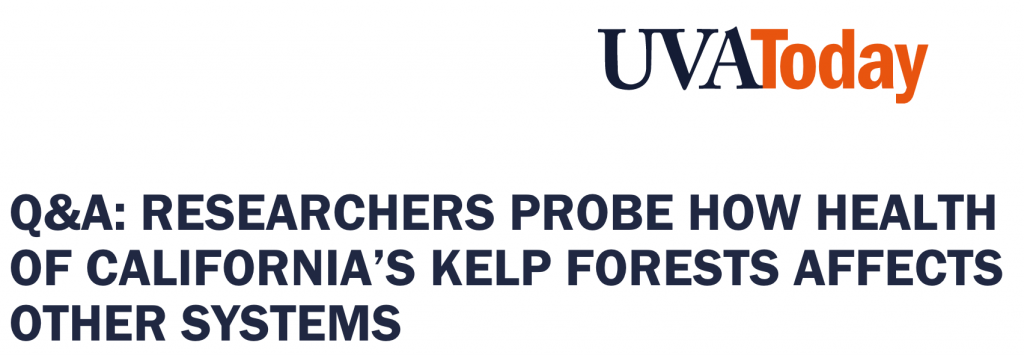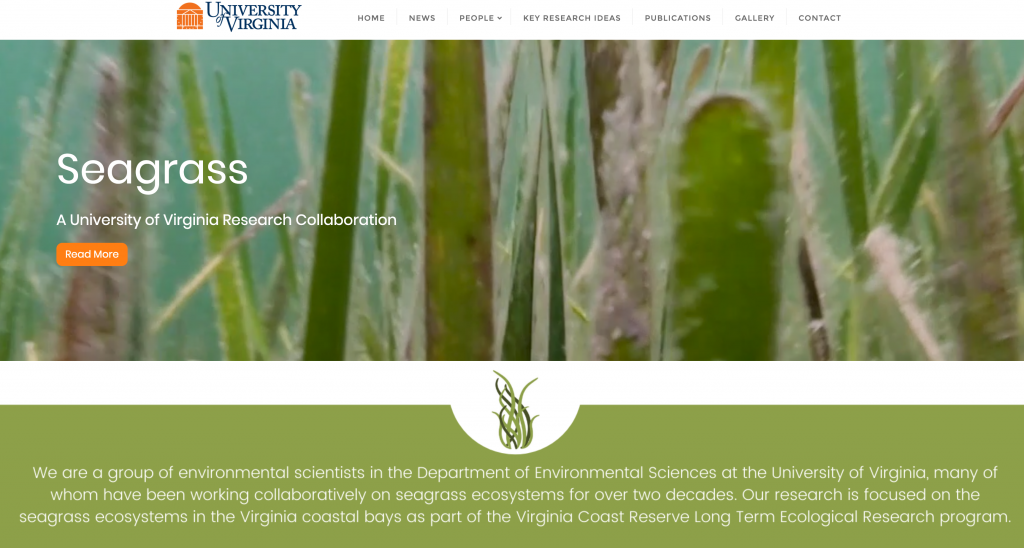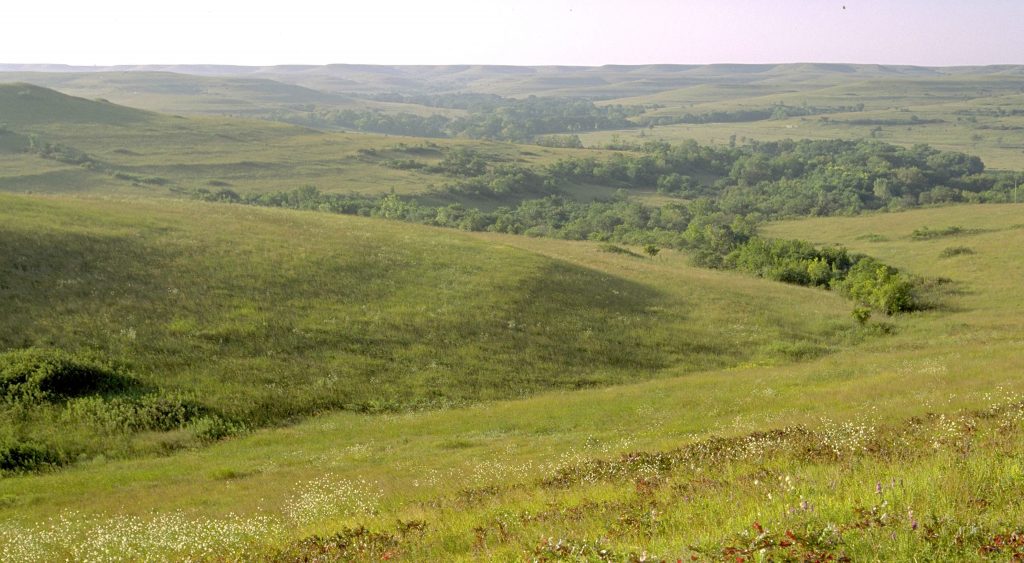News
Max Castorani receives NSF CAREER award
7/10/2024

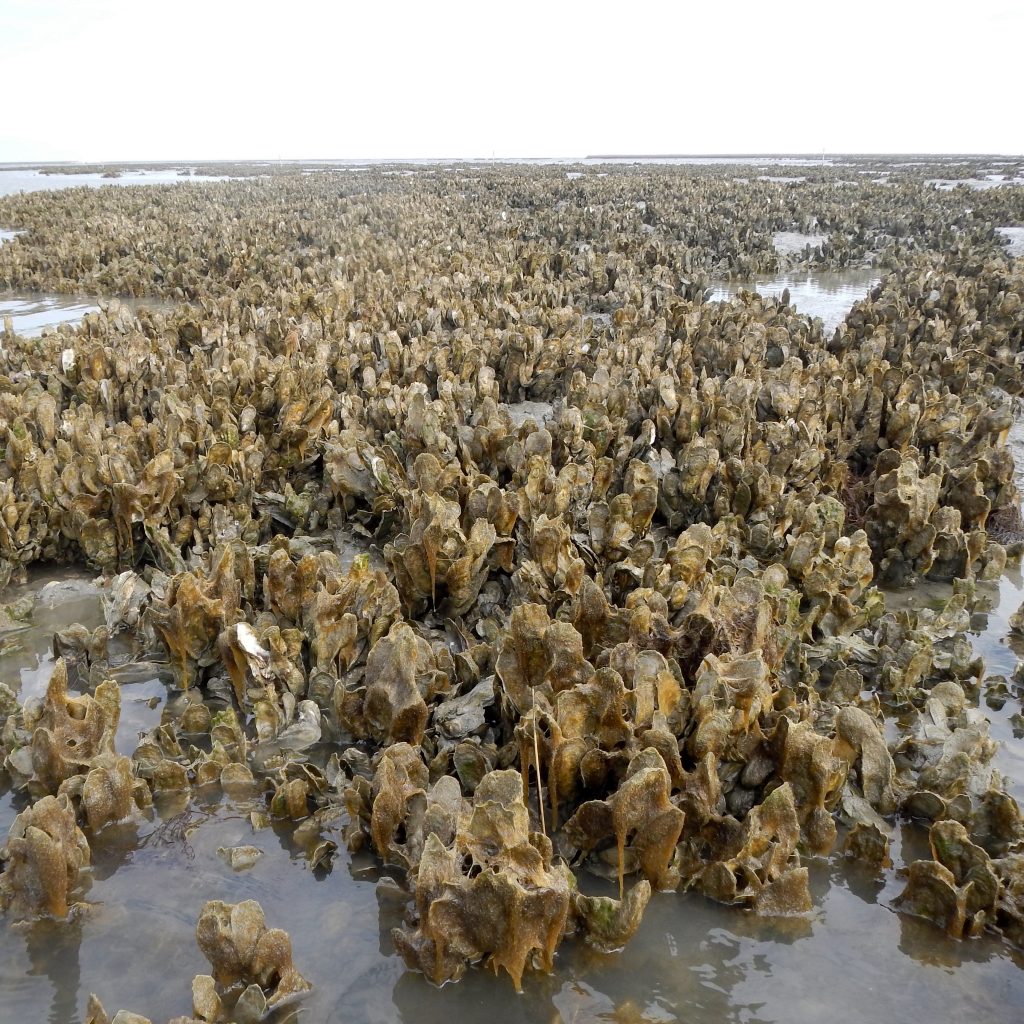
Professor Max Castorani has received a National Science Foundation CAREER award for his project, “Source-sink dynamics in a restored oyster metapopulation“. The NSF Faculty Early Career Development (CAREER) Program supports integrated research and education activities by early-career faculty. The new project will investigate how variability in the ocean environment over time affects the dispersal of oyster larvae; the survival, reproduction, and growth of juvenile and adult oysters; and the implications for successfully restoring oyster reefs. The grant will also support data-driven science education activities for 5th- and 7th-graders, community college students, and undergraduates at UVA.
More information can be found here.
Castorani Lab graduates first two Ph.D. students
6/18/2024
Two students in the Castorani Lab were recently conferred their Ph.D. degrees.
Dr. Kinsey Tedford completed her dissertation entitled, “Restoring and sustaining oyster reefs: drivers of spatial dynamics in oyster populations”. Kinsey is now a Fisheries Program Manager with the Oyster Recovery Partnership, overseeing its Sustainable Fisheries Program.
Dr. Sean Hardison completed his dissertation entitled, “Relationships between inshore fish communities, small-scale commercial fisheries, and a changing environment across spatial scales in the Mid-Atlantic Bight”. Sean is now a postdoctoral fellow at the University of Alaska Fairbanks and NOAA Alaska Fisheries Science Center.
Congratulations Kinsey and Sean!


New paper on marine heatwaves published in Ecology
4/10/2024
A new paper, led by former postdoc Maowei Liang, has been published in the journal Ecology. One of the major tenets of community ecology is that biodiversity can stabilize ecosystems and their functioning. We studied how extreme ocean warming affects such diversity-stability relationships using 20 years of data on algae, invertebrates, and fish from the Santa Barbara Coastal LTER. We found that diversity did affect stability, and this relationship was altered by warming. However, temperature-associated changes in diversity-stability relationships differed among functional groups, spatial scales, and scales of biological organization.
The paper can be downloaded here.
Photo credit: Douglas Klug.
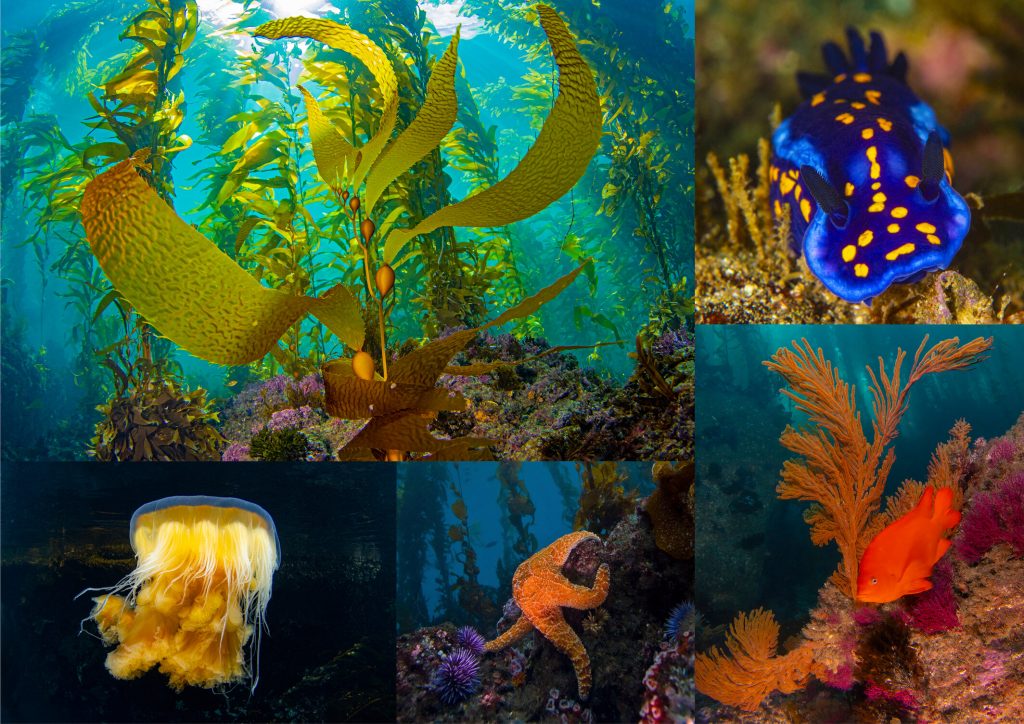
Photo credit: Douglas Klug.

Maowei Liang
New paper on kelp synchrony published in Ecology
3/7/2024
A new paper, led by recent undergrad Miriam Wanner, has been published in the journal Ecology. Theory predicts that dispersal (of offspring, seeds, spores, etc.) can synchronize the dynamics of populations across space, but this idea has seldom been tested in natural populations. By coupling an 11-year time series of giant kelp dynamics in southern California with a high-resolution ocean circulation model that simulates spore movement, we discovered that kelp spore dispersal was an important driver of kelp synchrony. This study is noteworthy as one of the few to statistically associate synchrony with dispersal in a natural population, and the first to do so in a marine organism.
The paper can be downloaded here.

Photo credit: Ron McPeak.

Miriam Wanner
New paper on cascades of spatial synchrony published in PNAS
1/3/2024
A new paper, led by Jonathan Walter, has been published in the journal Proceedings of the National Academy of Sciences. Using kelp forests and nearby sandy beaches as a model coupled system, we investigated how one ecosystem affects the synchrony of another ecosystem through resource subsidies (i.e., the movement of organic material across ecosystem boundaries). We discovered that synchronous kelp supply, mediated by wave action and beach width, results in synchronous deposition of kelp wrack (detritus) on sandy beaches, which then cascades across trophic levels to synchronize abundances of shorebirds that move among beaches to forage on wrack-associated invertebrates. Such cross-ecosystem synchronization via subsidies likely plays a major but previously unrecognized role in the dynamics and stability of coupled ecosystems.
The new findings have been summarized by UC Davis/UC Santa Barbara. The paper can be downloaded here.

Jon Walter
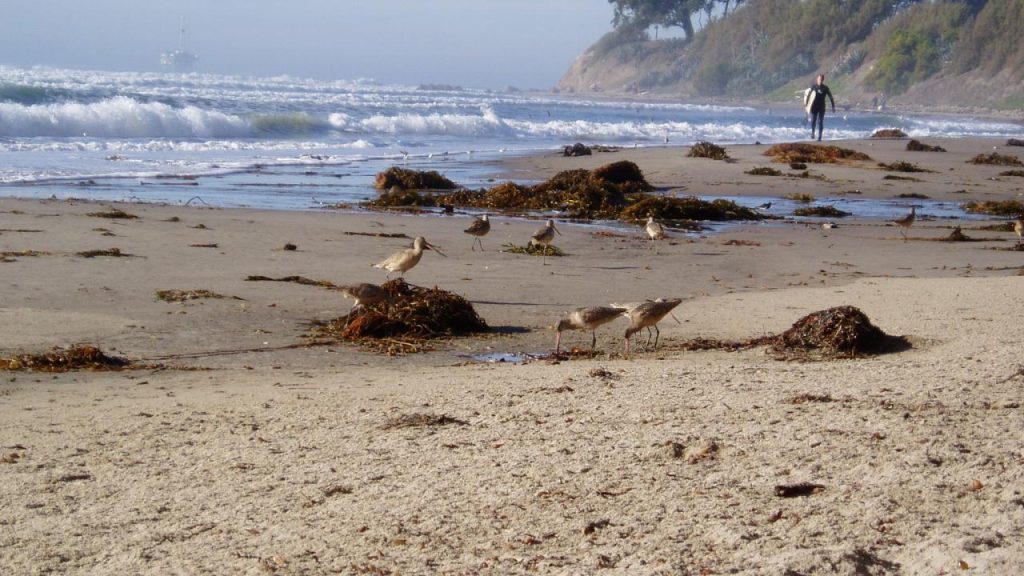
Photo credit: Jenny Dugan.
Castorani Lab welcomes Dr. Amanda Lohmann
9/28/2023
The Castorani Lab welcomes Dr. Amanda Lohmann as a new postdoctoral scholar at UVA. Amanda will be studying the role of kelp spatial synchrony in structuring kelp forest communities along the California coast. Prior to joining UVA, Amanda completed her Ph.D. at the Duke University Marine Laboratory with Dr. Doug Nowacek, where she studied the impact of climate change on the krill-centric marine ecosystem along the western Antarctic Peninsula. She is particularly interested in understanding how climate variability at different temporal/spatial scales drives the structure and function of marine ecosystems.
Welcome, Amanda!
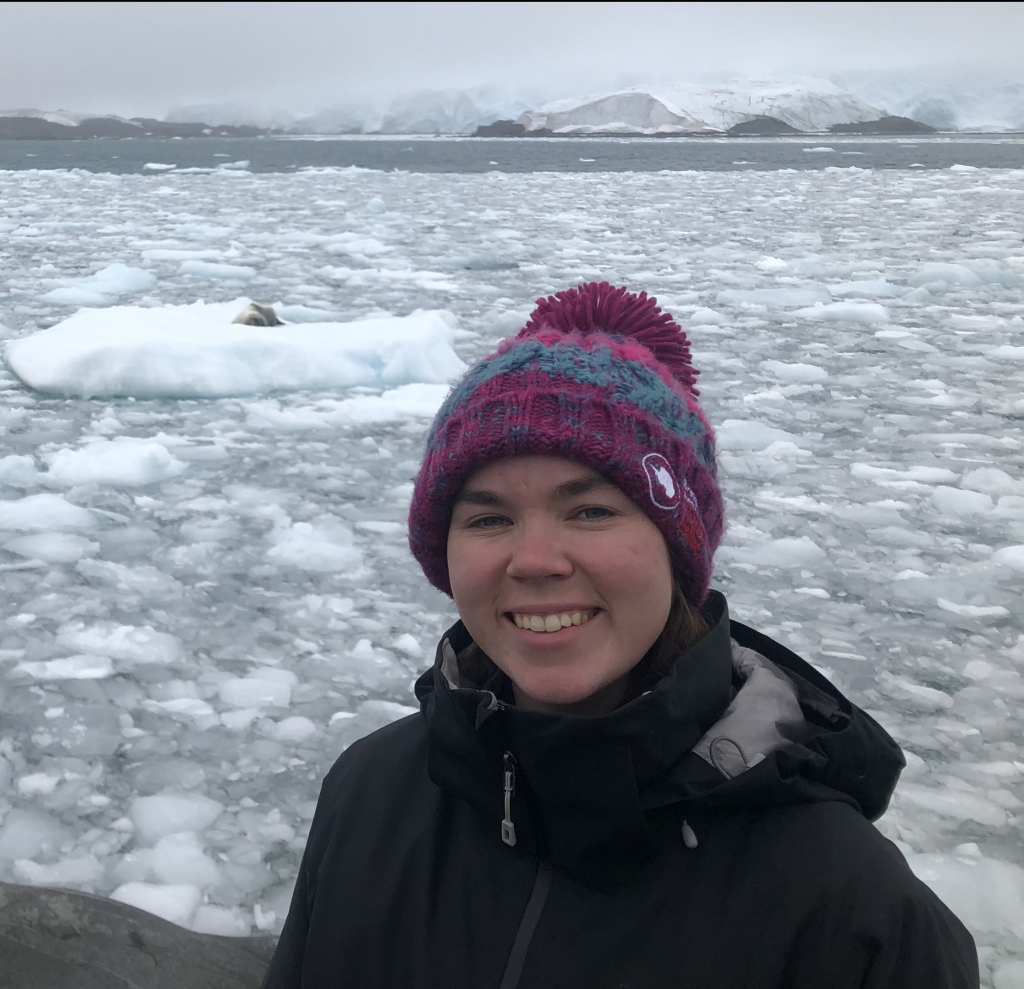
Amanda Lohmann
New paper on oyster restoration published in Ecological Applications
5/19/2023
A new paper, led by Rachel Smith, has been published in the journal Ecological Applications. We assessed the drivers of oyster restoration success using a meta-analysis of reef restoration projects throughout the U.S. Gulf and Atlantic coasts. We discovered that physical conditions control restoration success, as recovery of oyster production was greater in areas that were deeper (subtidal), saltier (mesohaline), and had greater tidal ranges. Additionally, restoration increased the abundance and diversity of free-swimming fish and shellfish over time as reefs aged (at least 8 years after their construction).
The new findings have been summarized by Mongabay. The paper can be downloaded here.
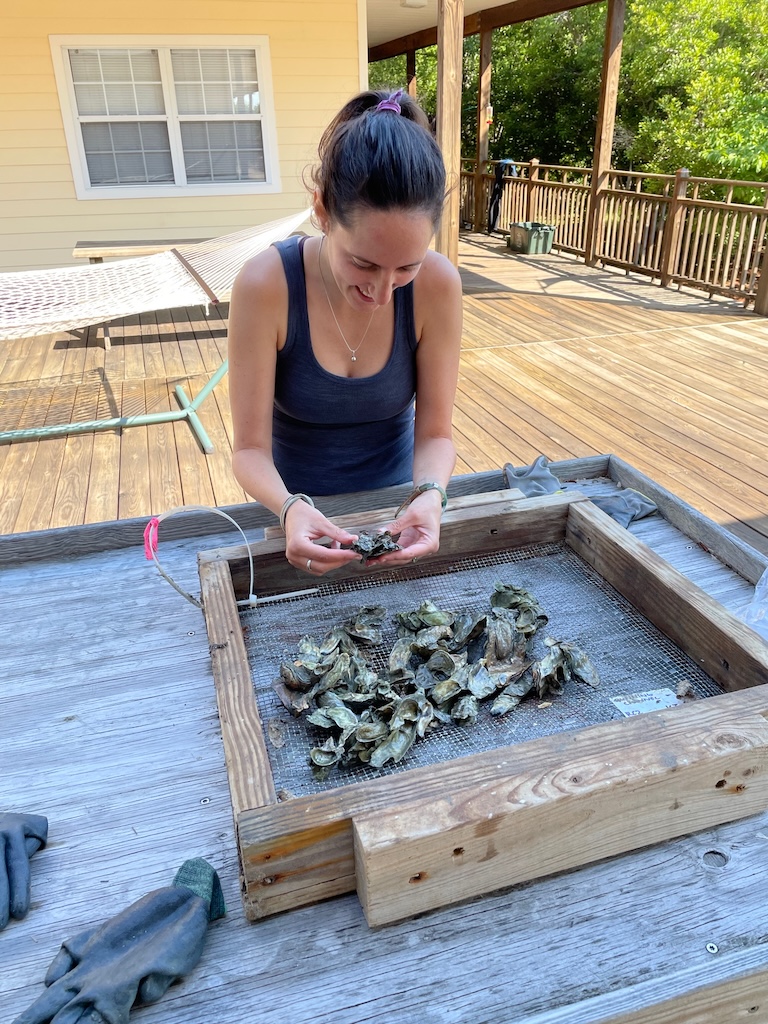
Rachel Smith
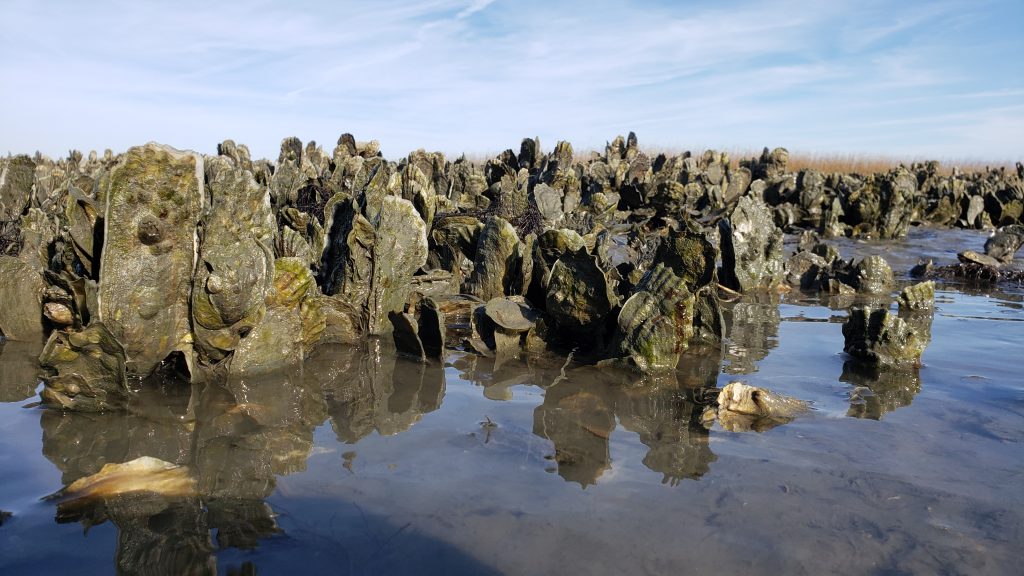
Photo credit: Bo Lusk, The Nature Conservancy.
New study on oyster predation published in Frontiers in Marine Science
1/17/2023
A new paper, led by Kinsey Tedford, has been published in the journal Frontiers in Marine Science. Through meta-analysis, we synthesized data on oyster recruitment and mortality from 384 predation experiments across the globe. We discovered that oyster predators caused an average 4.3× increase in oyster mortality and 46% decrease in recruitment. Predation increased with oyster size and varied with predator identity and richness. Predator effects also differed with experiment type and tethering method, indicating the importance of experimental design and the caution warranted in extrapolating results. Findings from this study suggest that high predation on larger oysters may limit reef-scale reproductive output (i.e., population fecundity) and restoring reefs in areas with few gastropod predators, such as oyster drills and conchs, may improve oyster restoration outcomes. The paper can be downloaded here.
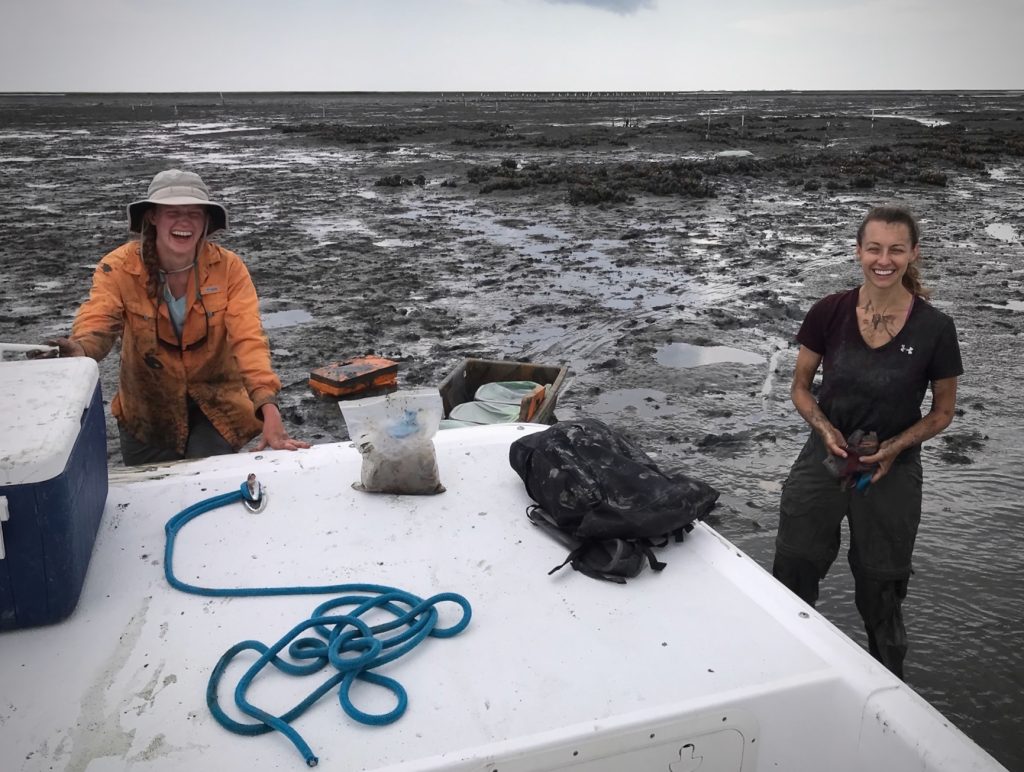
Emily Goetz (left) and Kinsey Tedford (right).
New study on oyster restoration benefits published in Conservation Biology
9/8/2022
A new paper, led by Rachel Smith, has been published in the journal Conservation Biology. Through meta-analysis, we synthesized data on ecosystem services associated with oyster restoration from hundreds of degraded and natural ‘reference’ oyster reefs that were paired with restored reefs across the U.S. Gulf of Mexico and Eastern Seaboard. Oyster restoration led to large increases in oyster production, habitat provisioning for fish and shellfish, and nutrient cycling relative to degraded habitats. Restored reefs also matched reference reefs for these ecosystem services. Findings from this study support the continued and expanded use of oyster restoration to recover these lost ecosystems and their associated services.
The new findings have been summarized by Mongabay. The paper can be downloaded here.

Photo credit: Aileen Devlin, Virginia Sea Grant.
Ph.D. position available in oyster reef restoration ecology
9/2/2022
We are recruiting a Ph.D. student to join our lab to study oyster reef restoration ecology. Details below or at this link. Those interested should be in contact as soon as possible.
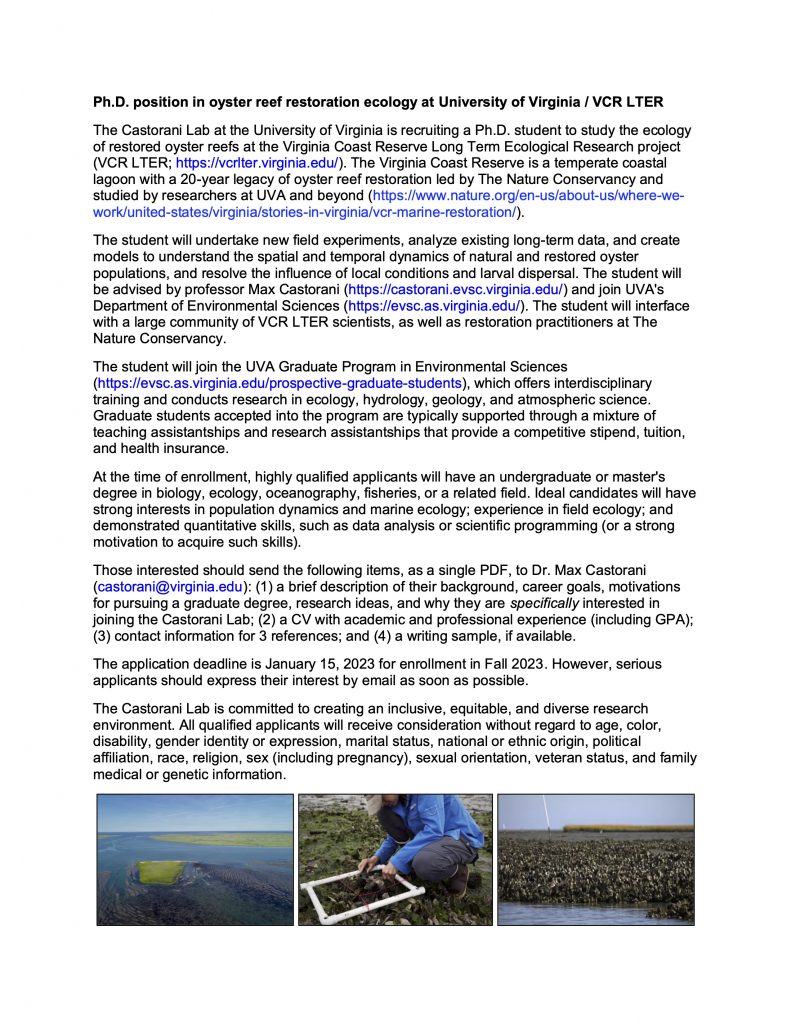
Two new papers on kelp forest synchrony published in Ecology Letters
7/27/2022
Two papers on the spatial synchrony of kelp forests have been published in the journal Ecology Letters. Both studies utilized a 33-year satellite-based time series of giant kelp canopy biomass along the coast of California, and datasets on the height of destructive waves and concentrations of seawater nitrate, which fuels kelp growth.
The first study, led by Max Castorani and Lawrence Sheppard, discovered that disturbance (storm-driven waves) and resources (seawater nitrate) cause large-scale synchronization of giant kelp dynamics over years to decades in relation to geographic variation in these drivers. This study showed that such ‘Moran effects’ interact to substantially enhance or diminish synchrony. Moreover, fluctuations in the North Pacific Gyre Oscillation explain 69–75% of kelp synchrony at 4–10 year timescales, indicating the importance of hemispheric climate variability.
The second study, led by Jon Walter, found that giant kelp synchrony occurs through both ‘booms’ and ‘busts’: kelp at wave-exposed sites experience synchronized population growth during calm periods that promote recovery, while kelp at sheltered sites experience synchronized crashes during periods of large waves. The study also presents a general theory of how the distribution and correlation structure of an environmental driver translates into tail-dependent spatial synchrony through a non-linear response.
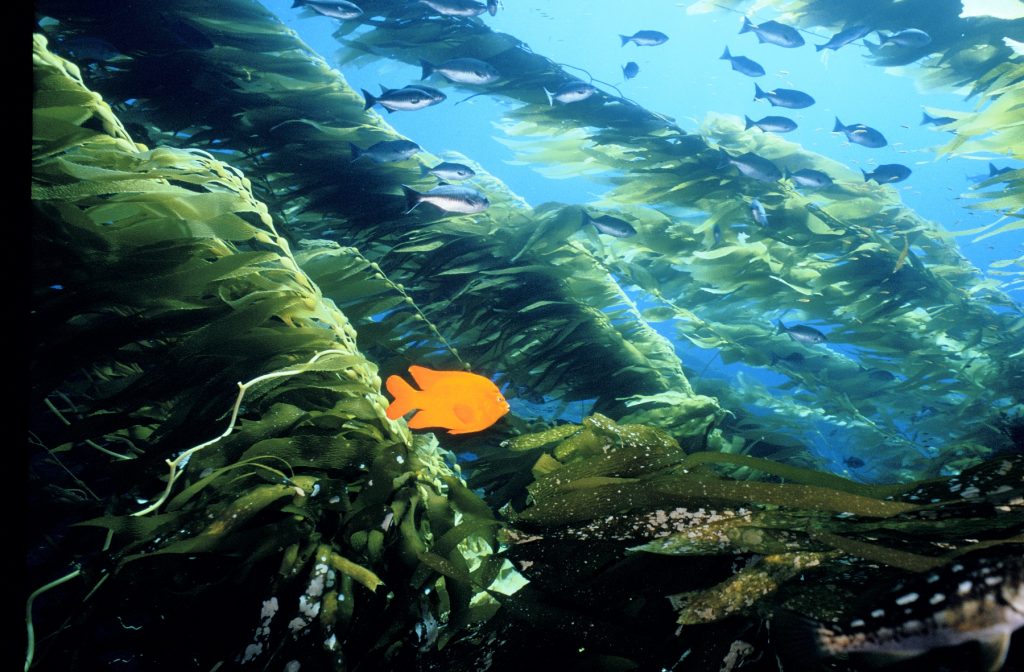
Photo credit: Ron McPeak.
Castorani Lab alumna studies seagrass of Fiji on Fulbright Fellowship
4/27/2022
Carrie Wentzel, alumna of UVA Environmental Sciences and former undergraduate researcher in the Castorani Lab, recently completed a U.S. Fulbright Fellowship investigating the relatively understudied seagrass meadows of Fiji. Working alongside partners at Conservation International and University of the South Pacific, Carrie collected data on seagrass sediment carbon stocks. You can read more about Carrie’s work in an article recently published in the Fiji Sun.
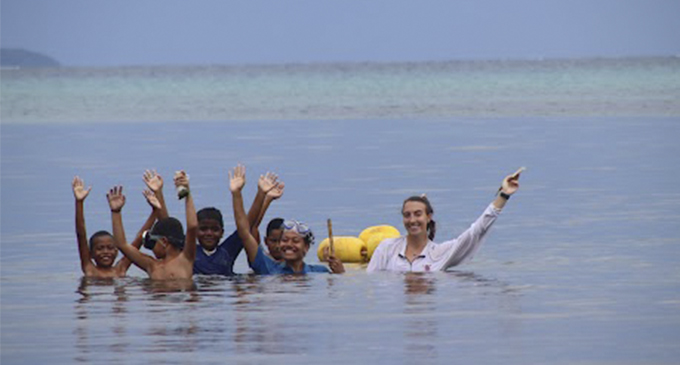
Photo credit: Kelera Sovasiga, Fiji Sun.
Ph.D. student Lauren Brideau receives NSF Graduate Research Fellowship
4/7/2022
Ph.D. student Lauren Brideau has been awarded a prestigious Graduate Research Fellowship from the U.S. National Science Foundation. The fellowship will support Lauren’s dissertation research for three years to study the coupled dynamics of coastal habitats and barrier islands under climate change at the Virginia Coast Reserve Long Term Ecological Research site. Congratulations Lauren!

Lauren Brideau
New paper on oyster restoration published in Conservation Letters
4/6/2022
A new paper, led by Rachel Smith, has been published in the journal Conservation Letters. In the study, we tracked 70 oyster reefs in coastal Virginia for up to 15 years to determine if restored reefs could match multiple ecological functions of healthy reference reefs. We discovered that abundances of oysters and a key mesopredator (Xanthid mud crabs) on restored reefs equaled reference reefs in approximately 6 years, indicating that restoration can initiate rapid, sustained recovery of foundation species and associated consumers. Moreover, as reefs matured and accrued biomass, they became more temporally stable, suggesting that restoration can increase resilience. Together, these results demonstrate that restoration can catalyze rapid recovery of imperiled coastal foundation species, reclaim lost community interactions, and help reverse decades of degradation.
The new findings have been summarized by UVA Today and the National Science Foundation. The paper can be downloaded here.
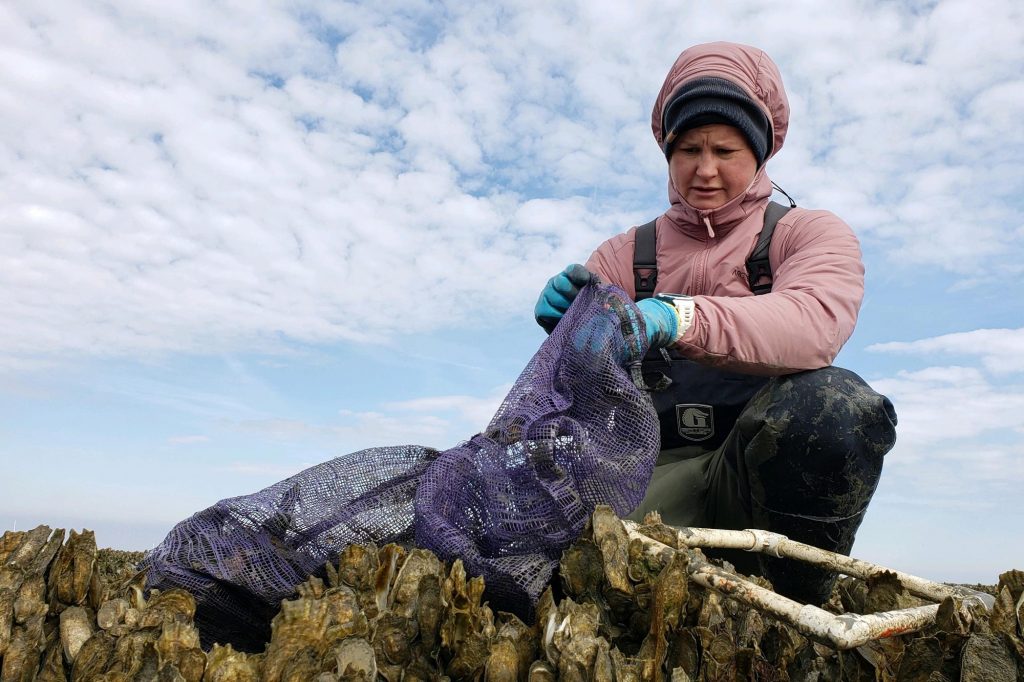
Photo credit: Bo Lusk, The Nature Conservancy.
New paper validating oyster habitat suitability model published in MEPS
2/8/2022
A new paper, led by Rachel Smith, has been published in the journal Marine Ecology Progress Series. In the study, we used a 14-yr dataset to validate an existing habitat suitability model for oyster populations at the Virginia Coast Reserve Long Term Ecological Research site (VCR LTER). The model, previously developed by VCR LTER colleagues, used remotely-sensed elevation, modeled water residence time, and fetch data to predict coastal areas most suitable as oyster habitat. Using independent population data collected by colleagues at The Nature Conservancy, we found that oyster biomass was 1.5 times greater in predicted suitable areas relative to less suitable areas. This finding supports future use of the habitat suitability model to select optimal locations for oyster restoration and aquaculture. More broadly, as the first validation of an oyster habitat suitability model that uses remotely sensed methods, our study supports the expanded use of remote sensing for coastal habitat suitability modeling, particularly when paired with long-term quantitative assessments.
The paper can be downloaded here.
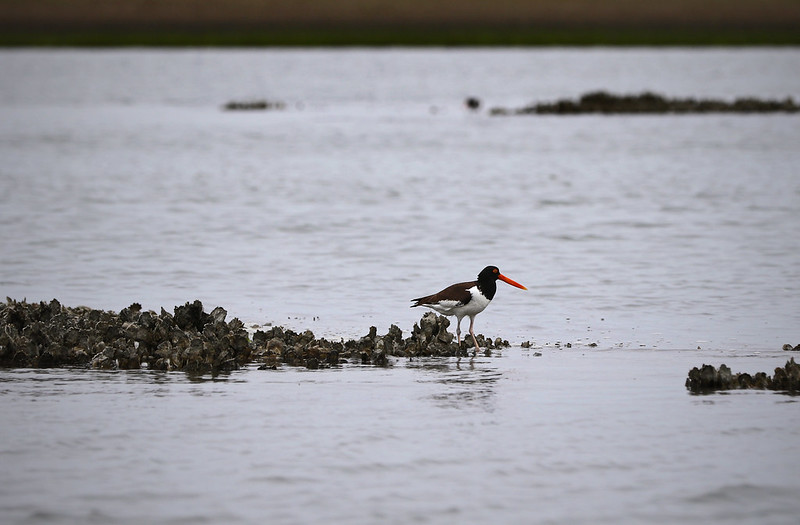
Photo credit: Aileen Devlin, Virginia Sea Grant.
New paper on blue crab spatial ecology published in Estuaries & Coasts
1/24/2022
A new paper, led by former lab undergraduate Selina Cheng, has been published in Estuaries and Coasts. The study examines how relative abundance of adult blue crabs is related to habitat structure across several spatial scales within the Virginia Coast Reserve Long Term Ecological Research site (VCR LTER). We discovered that blue crab abundance is influenced by seagrass, salt marsh, and bathymetric features on local to regional scales, and that these relationships vary with crab sex and female reproductive stage. The work highlights the importance of examining several species-habitat associations on multiple spatial scales and provides findings that can inform specific management actions in the face of rapid coastal change.
The paper can be downloaded here.
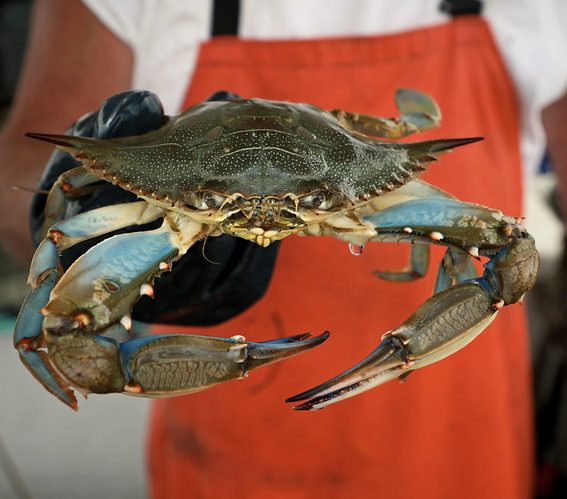
Photo credit: Aileen Devlin, Virginia Sea Grant.

Selina Cheng
New paper on biodiversity and stability published in Ecology
11/1/2021
A new paper, led by Jonathan Walter at the University of Virginia, has been published in the journal Ecology. The study investigates how species richness—a core facet of biodiversity—changes across space in ways that are similar or dissimilar. The work paired a theoretical model with the analysis of decades of biodiversity data from 20 marine and terrestrial ecosystems in the U.S. Long Term Ecological Research (LTER) Network. The study discovered that synchrony in species richness is common in nature and strongly related to ecosystem stability. The work highlights a new approach for studying biodiversity and emphasizes the spatial dimensions of stability.
The new findings have been summarized by the LTER Network Office. The paper can be downloaded here.
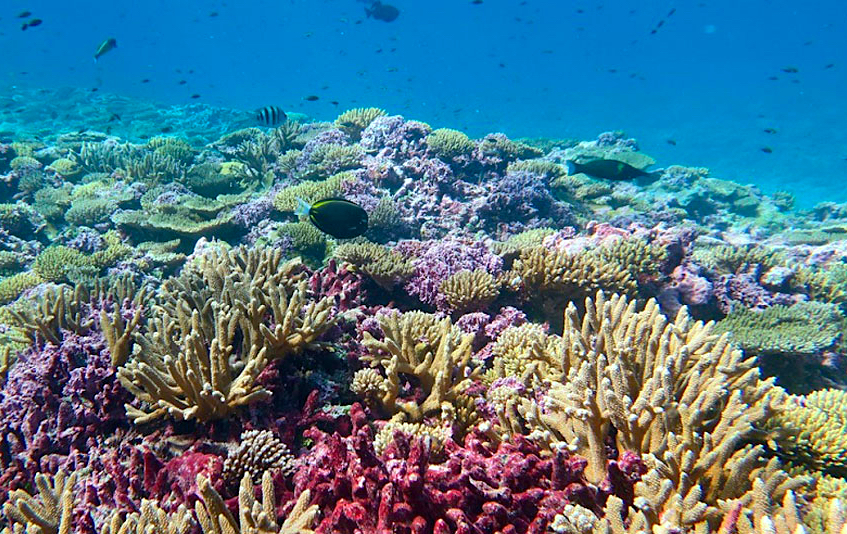
Photo credit: Morgan Winston, NOAA.
Castorani Lab welcomes Dr. Maowei Liang
09/22/2021
The Castorani Lab welcomes Dr. Maowei Liang as a new postdoctoral scholar at UVA. Maowei will be studying the role of grazing and other environmental factors in structuring synchrony in kelp forest ecosystems as part of our collaborative NSF grant. Prior to joining UVA, Maowei was a postdoc with Dr. Shaopeng Wang at Peking University. He completed his PhD at Inner Mongolia University, where he studied the influence of grazing and climate on the ecological function and biodiversity of grasslands.
Welcome Maowei!

Maowei Liang
New paper on kelp forest productivity published in Ecology Letters
8/3/2021
A new paper, coauthored with researchers at UC Santa Barbara, has been published in the journal Ecology Letters. In a decade-long field experiment at the Santa Barbara Coastal LTER, we tested how kelp forest net primary productivity (NPP) responds to the repeated loss of canopy-forming giant kelp (Macrocystis pyrifera) along a gradient in grazing and substrate suitability. We found that canopy disturbance suppressed total macroalgal NPP, but effects were strongest in high-quality habitats that supported dense kelp canopies susceptible to disturbance. The understory partly compensated for canopy NPP losses and this effect magnified with increasing habitat quality. Importantly, disturbance-driven increases in understory NPP were still rising after 5–10 years of disturbance, demonstrating the value of long-term experimentation for understanding ecosystem responses to changing disturbance regimes.
These new findings have been summarized by the National Science Foundation, UVA Today, and The UCSB Current. The paper can be downloaded here.
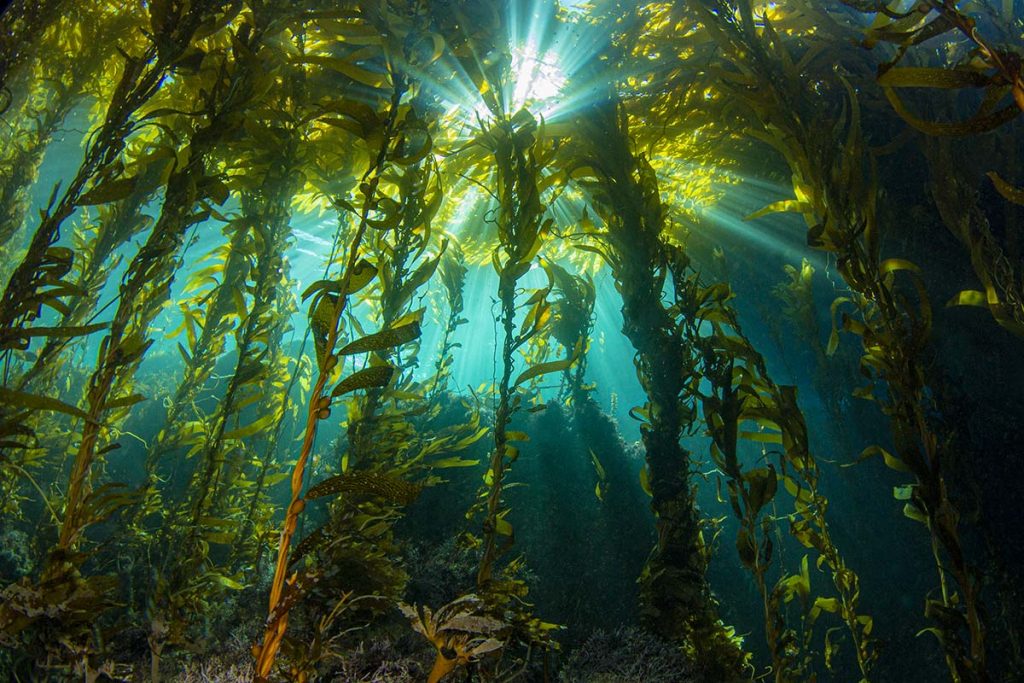
Photo credit: Douglas Klug.
Student fellowship announcements
6/14/2021
Three graduate students and one recent undergraduate student in the Castorani Lab have recently received fellowships for their research. Kinsey Tedford has been awarded a Jefferson Scholars Foundation Fellowship for her dissertation research on oyster reef ecology and restoration. Michael Cornish and Sean Hardison have each been awarded a Virginia Sea Grant Graduate Research Fellowship for their dissertation work on the ecology of fish and shellfish in coastal Virginia. Lastly, recent undergraduate alumni Carrie Wentzel has been awarded a Fulbright Fellowship to study seagrass ecology and conservation ecology in Fiji. Congratulations to Kinsey, Michael, Sean, and Carrie!

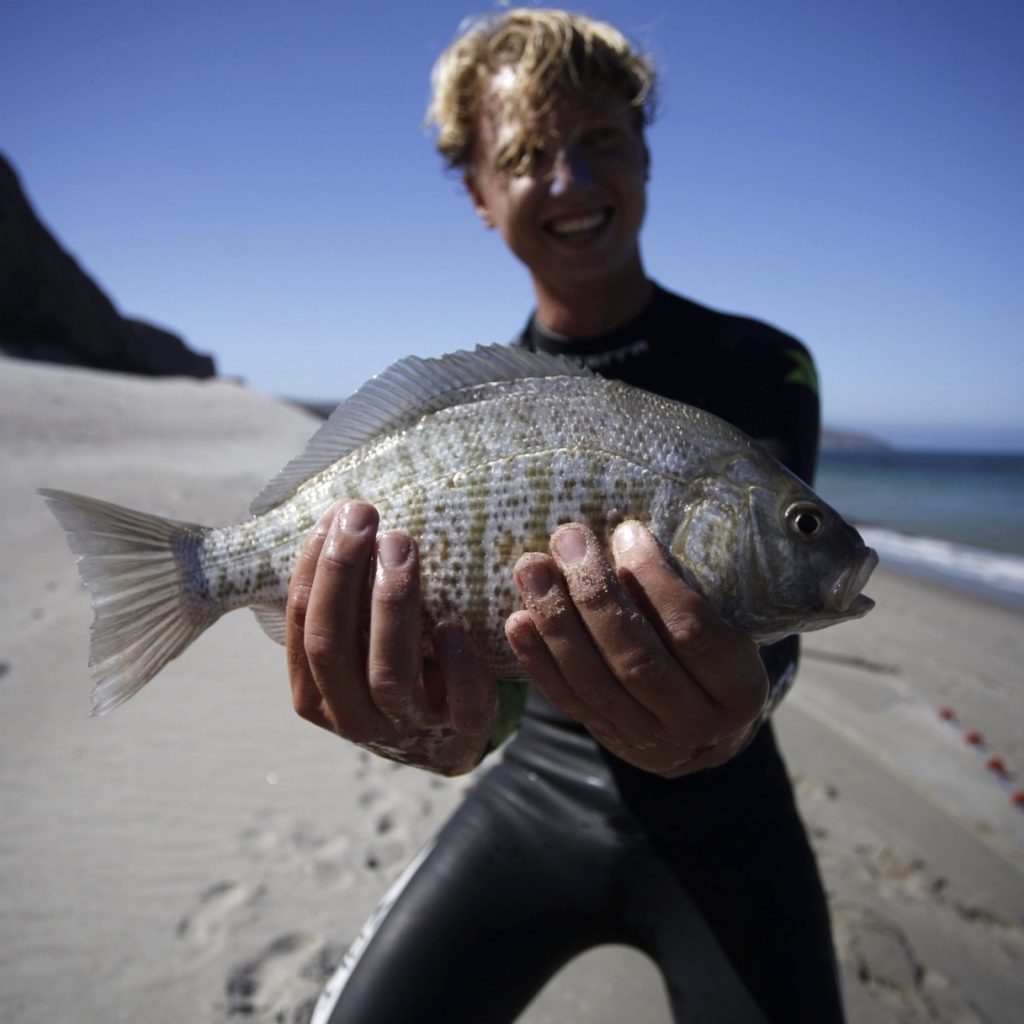


Postdoc position in population and community ecology
1/20/2021
We are currently seeking a postdoctoral research associate in quantitative population and community ecology. The position is part of a 3-year NSF-funded research project focused on the widespread ecological phenomenon of synchrony, the tendency for populations in distant locations to rise and fall in unison. Find more information and apply here. Applications are due February 20, 2021.
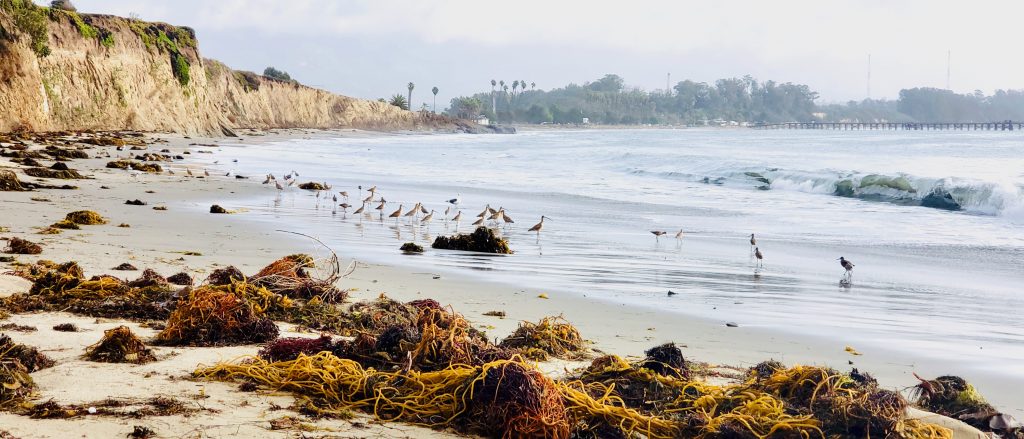
Photo credit: Nick Schooler.
New NSF award covered by UVA Today
10/8/2020
UVA Today has published a conversation with Max Castorani and Jon Walter about their new research award from the National Science Foundation. The grant will support research to discover the patterns, causes, and consequences of synchrony in California kelp forests. This work represents a collaborative effort by researchers at UVA, University of Kansas, UC Santa Barbara, and UCLA. The funds will also provide opportunities for undergraduate, graduate, and postdoctoral training in ecology, marine biology, and applied statistics.
Two coastal ecology PhD opportunities in Castorani Lab
8/16/2020
We are seeking two new PhD students to join our lab in the fall of 2021! Follow this link to learn more.
New UVA seagrass website is live
7/10/2020
We have launched a new collaborative website highlighting over two decades of ongoing seagrass research from our group and our broader team of colleagues. The key focus is our work on seagrass blue carbon, restoration and resilience, and maintaining biodiversity. Learn more at http://seagrass.virginia.edu/
New paper on compensatory dynamics published in Ecosphere
5/6/2020
A new paper, led by Lei Zhao at China Agricultural University, has been published in the journal Ecosphere as part of a Special Feature on Empirical Perspectives from Mathematical Ecology. Compensation among species is a key mechanism underpinning ecological stability, but compensatory dynamics can occur on different timescales (e.g., annual vs. decadal). This new work describes a novel timescale-specific variance ratio that improves upon the classic variance ratio by decomposing it according to the timescales of distinct drivers. By applying this new metric to long-term community data from U.S. LTER grassland sites, we detect the timescales over which species exhibit compensatory dynamics and show that synchronous dynamics are intrinsically timescale-dependent.
The paper can be downloaded here.
New paper on disturbance ecology published in BioScience
2/4/2020
A new paper, led by Evelyn Gaiser at Florida International University, has been published in the journal BioScience. We develop a new framework for disturbance ecology that incorporates social-ecological feedbacks and interactions among disturbances and accelerating global change. We then compare recent discoveries from seven US Long Term Ecological Research (LTER) sites to demonstrate how disturbance can maintain or alter ecosystem states, drive spatial patterns at landscape scales, influence social–ecological interactions, and cause divergent outcomes depending on other environmental changes.
The paper can be downloaded here.
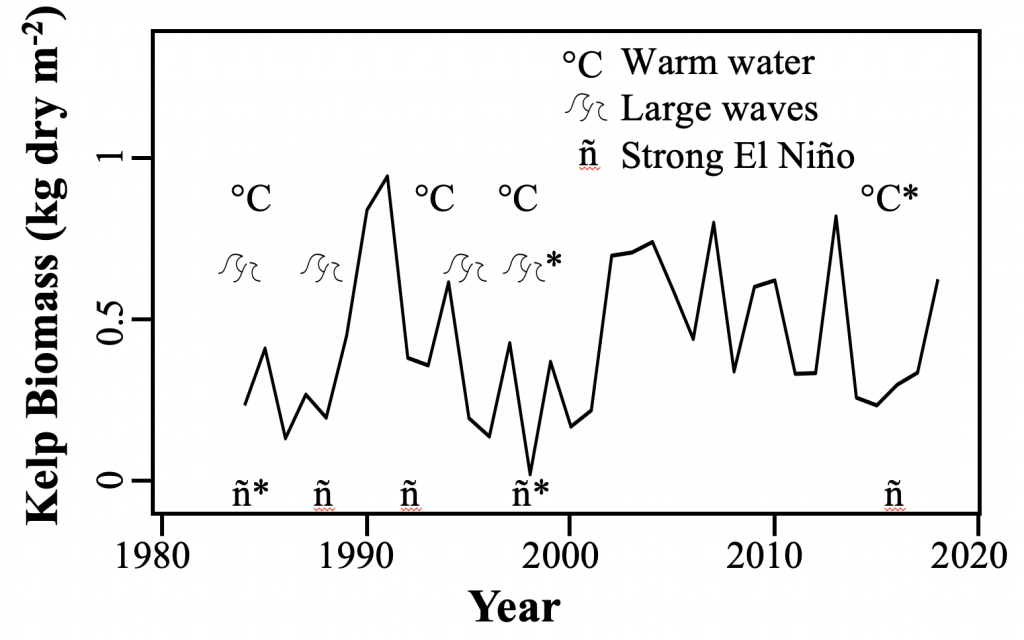
New paper on species coexistence published in Ecology
1/18/2020
A new paper, coauthored with Marissa Baskett at UC Davis, has been published in the journal Ecology. Using mathematical models of seagrass and colonial burrowing shrimp, which compete for space in shallow estuaries, we show how shifts in the size and frequency of disturbance mediate biodiversity through a coexistence mechanism known as the spatial storage effect. Our study also provides theoretical support for the intermediate disturbance hypothesis.
The paper can be downloaded here.
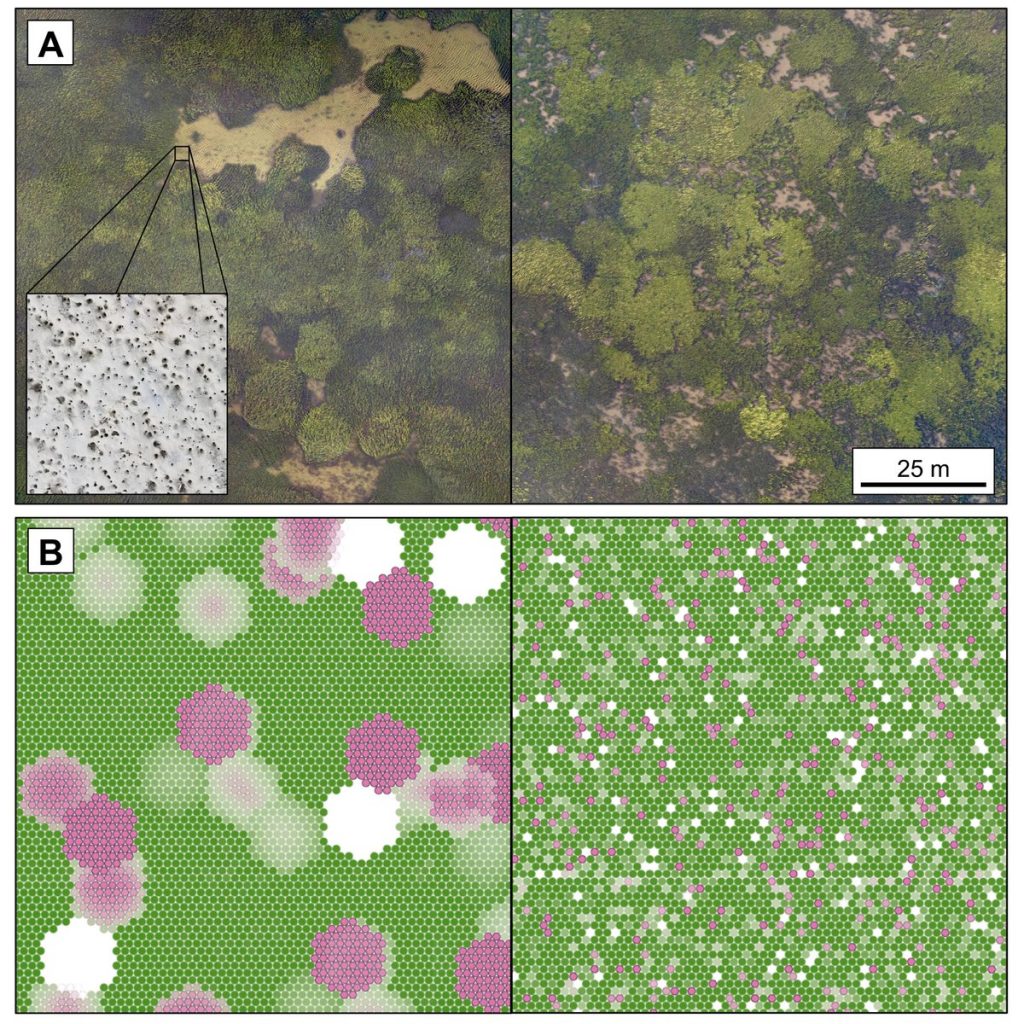
Virginia Coast Reserve LTER All Scientists Meeting
1/9/2020
We are gearing up for an exciting year of research at the Virginia Coast Reserve Long Term Ecological Research project following our annual All Scientists Meeting! We have plans for a number of new and ongoing studies that will help uncover the patterns, mechanisms, and consequences of ecological change across coastal barrier-island landscapes.
Our lab is especially focused on understanding how seagrass meadows, oyster reefs, and mudflats are changing in response to restoration and broader environmental shifts, and what this means for the structure and function of coastal ecosystems.
Stay tuned for results from these long term research efforts!
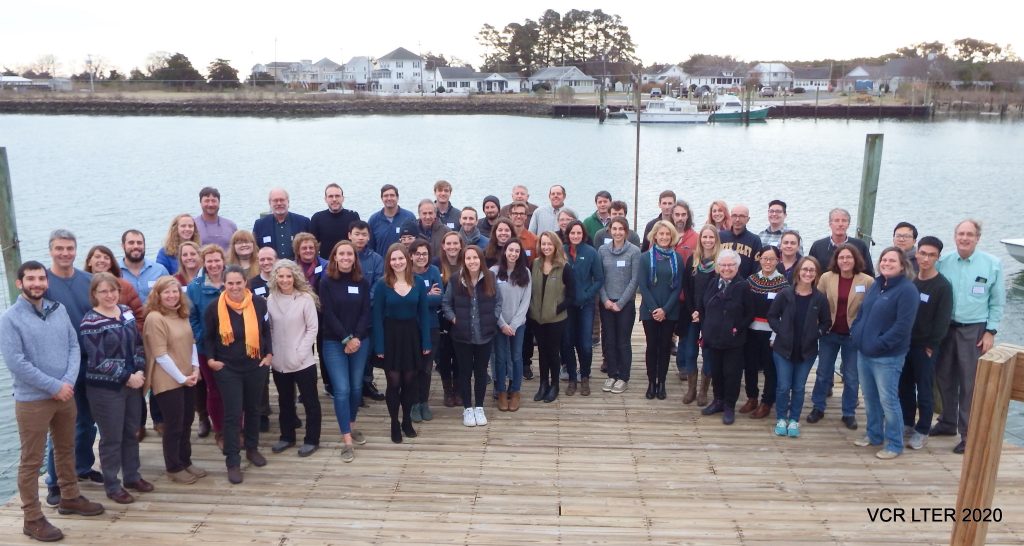
We’re hiring! Postdoc in Quantitative Ecology of Kelp Forest Ecosystems
10/29/2019
We are seeking a highly-motivated postdoctoral research associate to contribute to studies of the population and community ecology of kelp forest ecosystems in southern California.
The position will focus on the analysis of long-term ecological and oceanographic data from observational and experimental studies associated with the Santa Barbara Coastal Long Term Ecological Research Project (http://sbc.lternet.edu/), which has been funded by the U.S. National Science Foundation since 2000. Research will contribute towards the broad goal of understanding how environmental variation (e.g., nutrients, climate, disturbance) and ecological processes (e.g., competition, predation, dispersal) interact to structure the population dynamics of giant kelp (Macrocystis pyrifera) and the biodiversity of reef fishes, invertebrates, and algae.
Find details and apply at: https://uva.wd1.myworkdayjobs.com/en-US/UVAJobs/job/Charlottesville-VA/Postdoctoral-Research-Associate-in-Quantitative-Ecology-of-Kelp-Forest-Ecosystems_R0014654

Castorani Lab welcomes Dr. Rachel Smith
09/05/2019
The Castorani Lab welcomes Dr. Rachel Smith to UVA for Fall 2019. Rachel is a new postdoctoral scholar in The Nature Conservancy’s (TNC) NatureNet Science Fellow Program. She will be working in collaboration with UVA’s Virginia Coast Reserve LTER and TNC on the ecology and conservation science of restored oyster reefs on Virginia’s Eastern Shore. Prior to joining UVA, Rachel completed her PhD at the University of Georgia, where she studied the community ecology of mangrove forests and salt marshes.
Welcome Rachel!
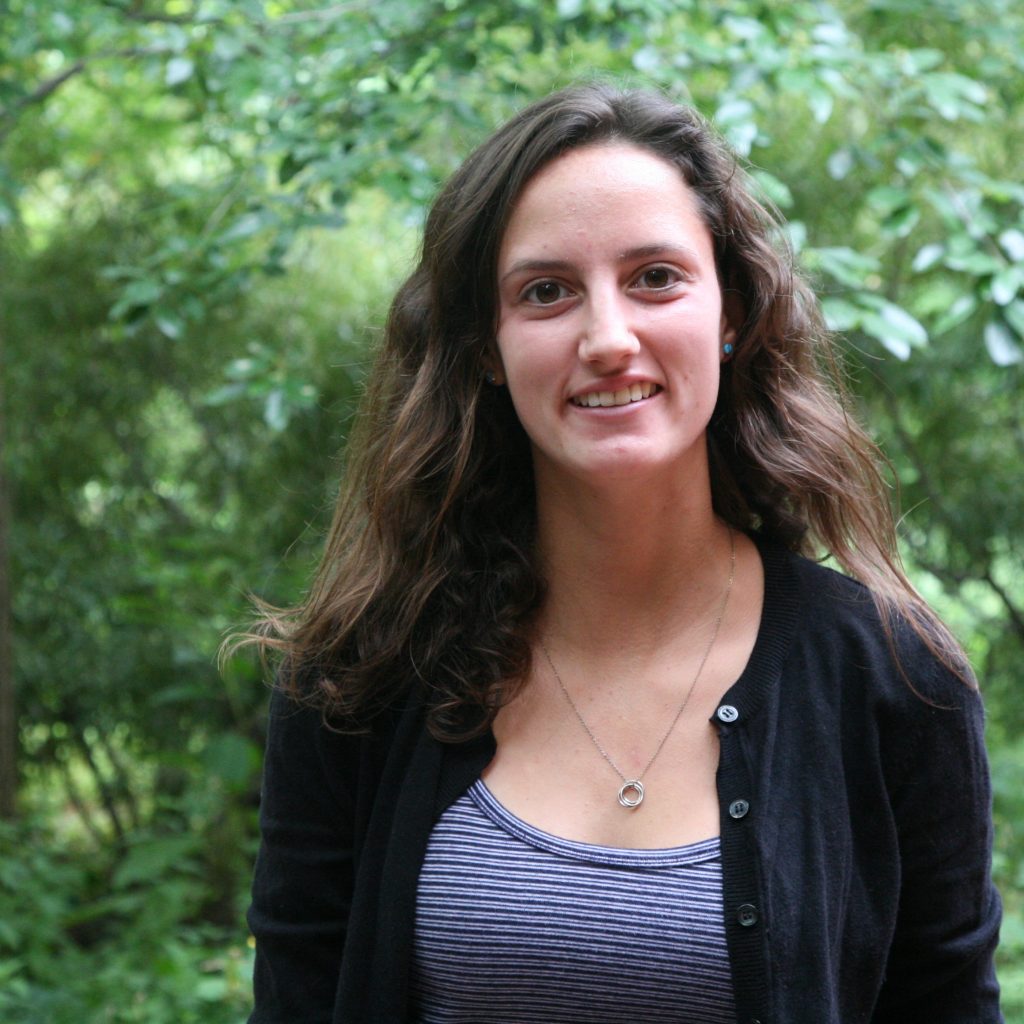
Rachel Smith
Castorani Lab welcomes two new PhD students
08/29/2019
The Castorani Lab welcomes two new PhD students to UVA for Fall 2019.
Sean Hardison (far left) was most recently a data analyst at the NOAA Northeast Fisheries Science Center, where his work included developing integrated ecosystem assessments for Mid-Atlantic and New England fisheries. He received a BS in biology from Penn State and a Master’s degree in biology from UNC Wilmington. Sean is interested in remote sensing, pattern recognition, population dynamics, and statistics.
Michael Cornish (third from left) joins us after receiving his BA in human ecology from College of the Atlantic. His undergraduate research included studies of sandy beach ecosystems at the Santa Barbara Coastal LTER. Michael is interested in spatial ecology, predator-prey dynamics, ichthyology, and remote sensing.
Welcome Sean and Michael!
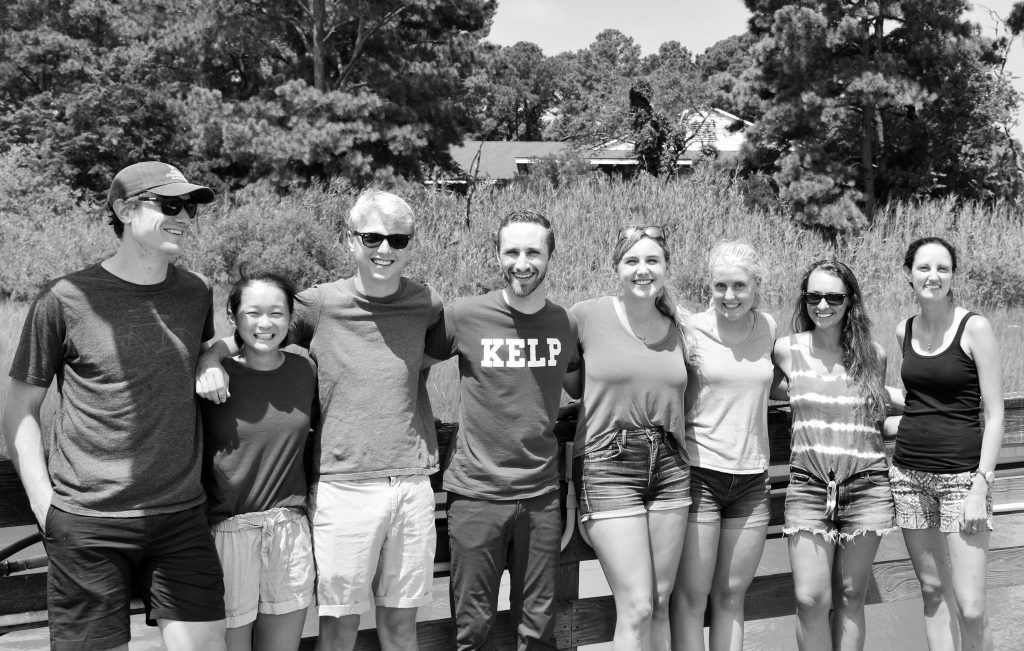
Castorani Lab, summer 2019
Kinsey Tedford and Carrie Wentzel receive research awards
04/29/2019
Two students in the Castorani Lab–PhD student Kinsey Tedford and undergraduate student Carrie Wentzel–have received awards from the UVA Department of Environmental Sciences for their summer research projects on coastal ecology.
Kinsey Tedford will receive support from the Graduate Exploratory Research Award for her dissertation research on the ecology of oyster reefs in coastal Virginia. Carrie Wentzel will receive support from the Hart Family Award for her research on the recovery of seagrasses at Point Reyes National Seashore in coastal California.

New paper on biodiversity and the loss of kelp forests published in Ecology
10/30/2018
A new paper, coauthored with colleagues at UC Santa Barbara, has been published in the journal Ecology.
Our work reports the results of a uniquely long-term (9 years), large-scale field experiment aimed at understanding how the loss of giant kelp forests by storms and other disturbances—which some climate models forecast to change in frequency or severity—alters the biodiversity of over 200 species of fishes, invertebrates, and seaweeds found within these coastal environments. We discovered that the frequency of giant kelp loss was the most important factor influencing the types and abundance of benthic sea life, whereas the severity of disturbance in a given year played a minor role. Annual loss of giant kelp caused a doubling of smaller algae and invertebrates attached to the seafloor (corals, anemones, sponges), but also resulted in 30–61% fewer fish and shellfish, such as clams, sea urchins, lobsters, crabs, and sea stars. These dramatic shifts indicate that future increases in the frequency of coastal storms and other drivers of kelp loss will likely cause big changes to marine biodiversity. By demonstrating the importance of studying repeated disturbances over many year, our experiment is also a testimony to the value of long-term ecological research.
These new findings have been summarized by the National Science Foundation, UVA Today, and The UCSB Current. The paper can be downloaded here.
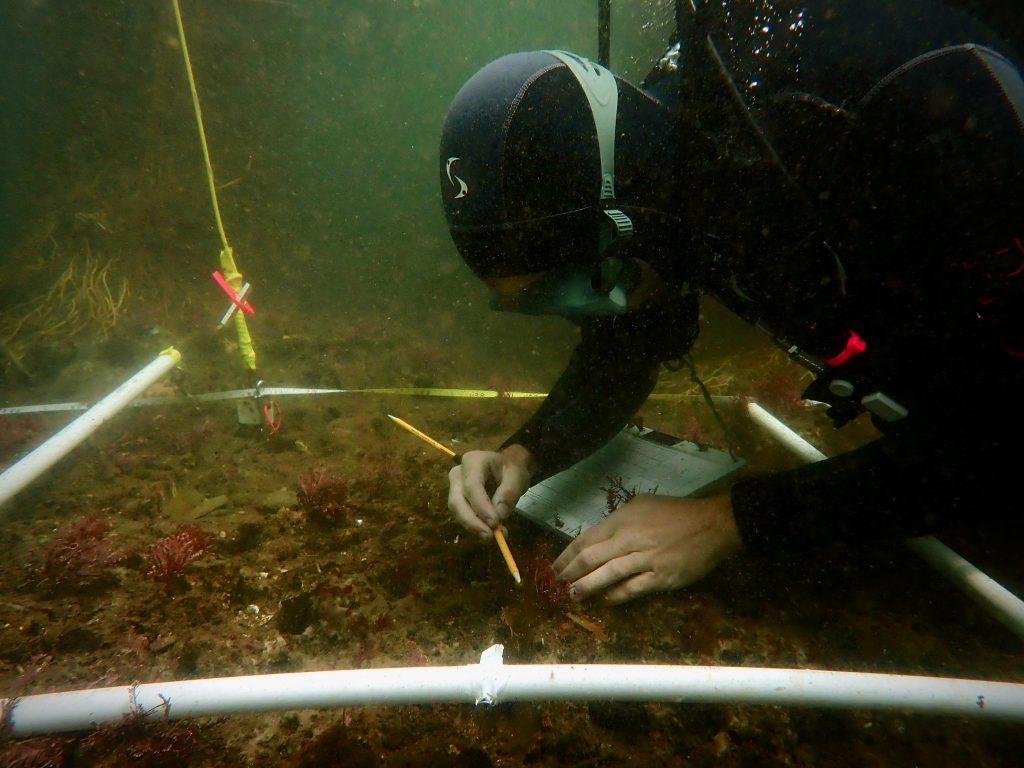
UC Santa Barbara graduate student Joseph Peters identifies small understory seaweeds in a kelp forest near Isla Vista, California. Photo credit: Santa Barbara Coastal Long Term Ecological Research Project.
Two coastal ecology PhD opportunities in Castorani Lab
8/4/2018
The Castorani Lab at the University of Virginia is recruiting two PhD students to study (1) the biodiversity and community ecology of coastal marine ecosystems and (2) the spatial ecology and dynamics of coastal habitats using drone- and satellite-based remote sensing, respectively. The students will be advised by professor Max Castorani (https://castorani.evsc.virginia.edu/), and join UVA’s highly interdisciplinary Department of Environmental Sciences (http://www.evsc.virginia.edu/) and collaborative Virginia Coast Reserve Long-Term Ecological Research program (https://www.vcrlter.virginia.edu/).
Focal study habitats include seagrass meadows, oyster reefs, and salt marshes within the coastal lagoon–barrier island system of Virginia’s Eastern Shore. Possibilities also exist for research on estuaries and kelp forests in California. The students will have opportunities to contribute to highly collaborative long-term studies in the Virginia Coast Reserve and Santa Barbara Coastal (http://sbc.lternet.edu/) LTER programs. Although research in the Castorani Lab is primarily motivated by fundamental ecological questions, there are opportunities for applied research related to coastal habitat restoration (seagrass, kelp, oysters) and commercial aquaculture (oysters, clams).
(1) Biodiversity and community ecology of coastal marine ecosystems: Prospective students should be interested in undertaking observational and experimental field studies of benthic invertebrate and fish assemblages in temperate coastal ecosystems, primarily those along Virginia’s Eastern Shore, as well as analyzing existing long-term community data. At the time of enrollment, highly-qualified applicants will have an undergraduate or master’s degree in biology, ecology, fisheries, or a related field. Ideal candidates will have experience in field ecology, ideally having carried out experiments within marine or aquatic ecosystems; knowledge of the biology of marine organisms; strong quantitative skills; and data analysis experience using R.
(2) Spatial ecology of coastal habitats using drone and satellite remote sensing: Prospective students should be interested in studying the dynamics of coastal habitats in Virginia and California using optical and multispectral imagery gathered from unmanned aerial and satellite platforms. At the time of enrollment, highly-qualified applicants will have an undergraduate or master’s degree in biology, ecology, environmental science, geography, computer science, or a related field. Ideal candidates will have FAA Remote Pilot Certification (“Part 107” license); experience flying small unmanned aircraft; strong quantitative skills; experience with the collection, processing, and analysis of remotely-sensed data; and knowledge of geospatial analyses using R, Matlab, Python, or ArcGIS.
UVA has a highly interdisciplinary Graduate Program in Environmental Sciences (http://www.evsc.virginia.edu/academics/graduate/), offering training and conducting research in ecology, geosciences, hydrology, and atmospheric sciences. Graduate students accepted into the program are typically supported through a mixture of teaching assistantships and research assistantships that provide a competitive stipend, tuition, and health insurance.
Those interested should send the following items, as a single PDF, to Dr. Max Castorani (castorani@virginia.edu): (1) a brief description of their background, career goals, motivations for pursuing a graduate degree, research ideas, and why they are specifically interested in joining the Castorani Lab; (2) a CV with academic and professional experience (including GPA); (3) contact information for 2–3 references; and (4) a writing sample.
The application deadline is January 15, 2019 for enrollment in Fall 2019, however serious applicants should express their interest as soon as possible.
Castorani Lab opening at University of Virginia in Fall 2017
5/16/2017
I am thrilled to announce that I will be joining the University of Virginia as an Assistant Professor of Environmental Sciences in the Fall Semester of 2017. Prospective graduate students and postdocs should read about opportunities in the lab or find me at upcoming meetings of ESA, CERF, or WSN.

New paper on giant kelp metapopulations in Proc Roy Soc B
1/25/2017
Our results have also been summarized by The UCSB Current.
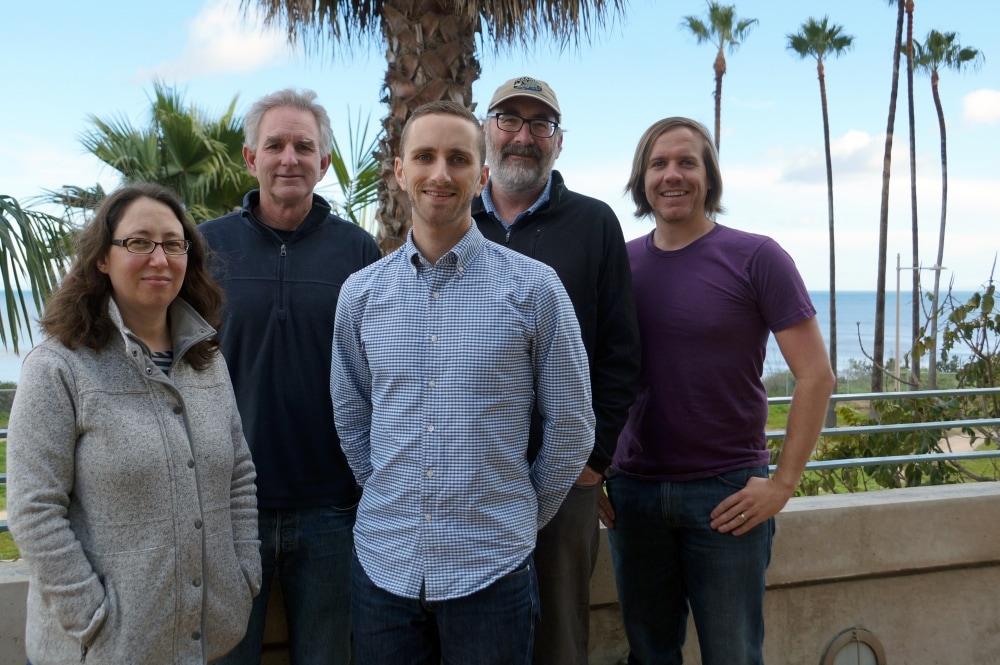
From left to right: Rachel Simons, Dan Reed, Max Castorani, Dave Siegel, and Tom Bell. Photo credit: Sonia Fernandez
New paper in ES&T: Metabolomics of seagrass stress
10/28/2016

Photo credit: Donna Ball and Erin Koshko.
New paper: Native predator chemical cues induce anti-predation behaviors in an invasive marine bivalve
1/14/2016
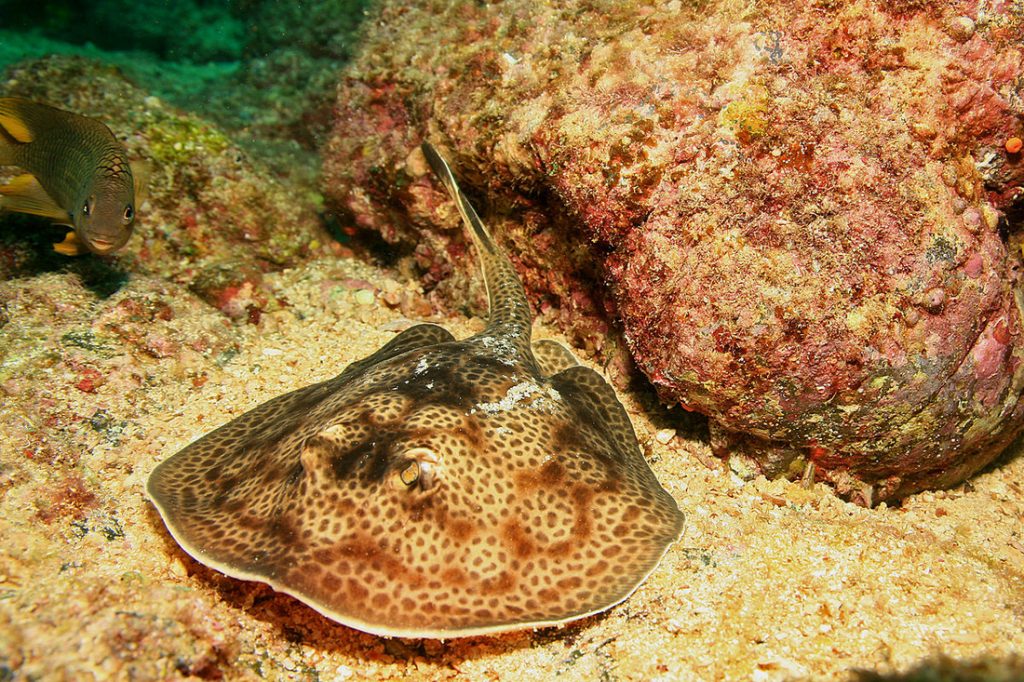
Photo: L. Ilyes
